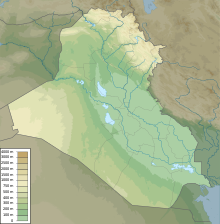Shanidar Cave
Iraqi- Kurdish site of Neanderthal remainsShanidar Cave is an archaeological site on Bradost Mountain, within the Zagros Mountains in the Erbil Governorate of Kurdistan Region in northern Iraq. Neanderthal remains were discovered here in 1953, including Shanidar 1, who survived several injuries, possibly due to care from others in his group, and Shanidar 4, the famed 'flower burial'. Until this discovery, Cro-Magnons, the earliest known H. sapiens in Europe, were the only individuals known for purposeful, ritualistic burials.
Read article
Top Questions
AI generatedMore questions
Timeline
AI Generated- 1951Anthropologist Ralph Solecki first explored the Shanidar Cave site with a sounding.
- 1953Neanderthal remains were discovered in Shanidar Cave, including Shanidar 1 and Shanidar 4.








